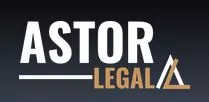The law requires all passengers to wear seat belts, with penalties for non-compliance. Despite this, 15% of road deaths in NSW involve not wearing a seatbelt, and nearly 10,000 fines are issued annually.
NSW law mandates seat belt use for all vehicle occupants, with exemptions for certain drivers (e.g., reversing, medical conditions) and specific vehicles.
When did seatbelts become compulsory in NSW?
Seat belts became compulsory in New South Wales (NSW) in 1971 due to high road fatalities. NSW was among the first to have mandatory seat belt laws. According to Peter Dunphy, the Head of Transport Safety at Transport NSW, road fatalities peaked at almost 1300 annually during the early 1970s.
Not wearing seat belt statistics
According to the NSW Government, 15 percent of deaths on NSW roads every year still involve not wearing a seatbelt, with 36 people tragically lost last year. An average of 220 people per year are injured due to not wearing a seatbelt.
Almost 10,000 people are fined each year for not using a seatbelt, it is believed that the new camera system will decrease this. According to the New South Wales government, all revenue received for seatbelt offences goes directly back into road safety.
Not wearing seat belts laws NSW
Seat belt laws in NSW require everyone in a vehicle to wear a seat belt. Regulation 264 of the Road Rules 2014 sets out:
"The driver of a motor vehicle that is moving, or is stationary but not parked:
(a) must occupy a driver's seating position that is fitted with an approved seat belt, and
(b) must not occupy the same seating position as another passenger, whether or not the other passenger is exempt from wearing a seatbelt under rule 267, and
(c) must wear the seatbelt properly adjusted and fastened, unless the driver is reversing the vehicle or exempt from wearing a seatbelt under rule 267."
If you have been fined for not wearing a seat belt, you can contact a driver licence appeal lawyer to get advice about how to contest this or avoid a licence suspension.
Exemptions to seat belt laws
Exemptions to seat belt laws are contained in regulation 267 include:
- Drivers are exempt when reversing, driving garbage or delivery vehicles under 25 km/h, or with a medical certificate;
- Passengers are exempt if receiving or administering urgent medical treatment, holding a medical certificate, or riding in certain buses or emergency vehicles;
- Exemptions exist for special vehicles such as garbage collectors, in sleeper compartments of trucks/buses or other vehicles without seatbelts;
- Children under 4 years must use either a rear-facing child car seat or a forward-facing child car seat with an inbuilt harness;
- Children between 4-7 years of age must use a forward-facing child car seat with an inbuilt harness or an approved booster seat;
- There are also exemptions if authorised by Transport for NSW or carrying a certificate under specific conditions.
How to wear a seat belt correctly?
The correct way to wear a seatbelt is to position it across your shoulder and low across the hips or stomach.
It should not touch the face or neck and it should not be twisted. Be careful that the seatbelt is not too high across the abdomen, it can place pressure on vital internal organs in the event of a crash. A seatbelt must be taut, not slack.
Do Children Have to Wear Seatbelts?
Children are required to wear seat belts, but the type of restraint varies depending on their age, size, and the specific circumstances.
For children under 7 years old, specific child restraints are mandatory. Infants up to 6 months old must be placed in a rear-facing child car seat. Between 6 months and 4 years, children can use either a rear-facing or a forward-facing child car seat with an inbuilt harness. From 4 to 7 years of age, children should use a forward-facing car seat with an inbuilt harness or an approved booster seat.
There are also restrictions on where young children can sit in a vehicle. Children under 4 years old cannot sit in the front seat if the vehicle has two or more rows of seats. Those aged between 4 and 7 years old can only sit in the front seat if all the rear seats are occupied by children under 7.
Once a child reaches 7 years of age and is at least 145 cm tall, they can transition to using a standard seatbelt. However, if they are shorter than 145 cm, they should continue using a booster seat or an anchored safety harness to ensure proper fit and safety.
In special situations, such as traveling in taxis or tow trucks, children still need to be restrained appropriately. For instance, in a taxi, children under 12 months must use a child car seat, while older children must use a booster seat or a seatbelt. Additionally, after a vehicle breakdown, a child under 12 months can sit on an adult's lap in a tow truck if no child seat is available, but only if the truck has more than one row of seats.
For children with medical conditions or disabilities, alternative restraints may be used if a doctor provides a certificate stating the need for such accommodations.
Ensuring child car seats and boosters are properly fitted according to the manufacturer's instructions is crucial, and only seats that meet the Australian/New Zealand Standard AS/NZS 1754 are approved. Non-compliance with these rules can result in fines and demerit points, with harsher penalties possible if the offence is severe.
Penalties
Drivers who are caught not wearing an adequately positioned and adjusted seatbelt face a fine of $410 and 3 demerit points.
Two unrestrained passengers carry a fine of $818 and 6 demerit points, while three unrestrained passengers attract a fine of $1,318 and 6 demerit points. Having four or more unrestrained passengers would result in a $1728 fine and 6 demerit points.
If the penalty notice is paid, then there will be no need to attend a court. However, you will incur demerit points.
To beat a demerit point suspension, you can elect the penalty notice to court. This will require you to appear in court and enter a 'guilty' or 'not guilty' plea before a Magistrate or Judge.
If you're found to be 'not guilty' after a defended hearing, the charge will be dismissed.
If you plead guilty to the charge, the only way you will avoid the demerit points and fine is if the Magistrate or Judge is convinced to impose a section 10 non-conviction penalty as a sentence. This will avoid the licence suspension or disqualification.
What is the Fine for Not Wearing a Seatbelt in NSW?
The fine for not wearing a seat belt in NSW is $344 plus 3 demerit points.
If a person elects the fine to court, the penalty can increase to $2,200 under rule 264 Road Rules 2014 (NSW).
The following table sets out a few of the penalties you can receive if driving without a seatbelt:
| Rule 264 (1) (a) | Driver not occupy drivers seating position / seatbelt fitted | $410 | 3 |
| Rule 264 (1) (b) | Driver occupy same seating position as another passenger | $410 | 3 |
| Rule 264 (1) (c) | Driver not wear seatbelt adjusted properly and fastened | $410 | 3 |
| Rule 264-1 (1) | Drive with passenger 16 years or older unrestrained | $410 | 3 |
| Rule 264-1 (1) | Drive with 2 unrestrained passengers | $818 | 6 |
| Rule 264-1 (1) | Drive with 3 unrestrained passengers | $1318 | 6 |
| Rule 264-1 (1) | Drive with 4 or more unrestrained passengers | $1728 | 6 |
| Rule 265 (1) | Passenger seatbelt not adjustened or fastened (16 yrs or older) | $410 | 3 |
The content of this article is intended to provide a general guide to the subject matter. Specialist advice should be sought about your specific circumstances.


